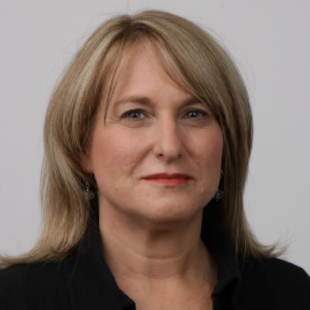Today’s crisis is unprecedented in its effects on the country’s institutions, population and economic, with much of public life stopped. But schools have closed before because of a viral outbreak in different cities, and students were sent home to do distance learning.
This post tells the story of what happened in 1937 when the public schools in Chicago closed for three weeks, delaying the start of the school year, because of fears about the spread of polio, which caused epidemics over several decades. Some 457,088 people got polio from 1937 to 1997, according to Post-Polio Health International. Thousands of people, including children, died and many more were paralyzed.
Here is a look at how Chicago educated its children when they were at home in the fall of 1937. It was written by Michael Hines, an assistant professor at Stanford University’s Graduate School of Education where he researches and teaches the history of education in the United States. He has published articles in the Journal of the History of Childhood and Youth and History of Education Quarterly, and is writing a book on race, democracy and Chicago’s schools during World War II.
By Michael Hines
A rapidly spreading virus with no known cure or vaccine. Chicago-area schools closed. Experiments in remote learning and concerns over access to technology. This has happened before.
While the challenges to education stemming from the novel coronavirus pandemic may seem unprecedented, educators may be surprised to learn that almost 100 years ago Chicago’s schools faced similar circumstances.
In the fall of 1937, an outbreak of poliomyelitis, or polio, a highly infectious disease that can lead to paralysis and death and is especially dangerous to young children, swept through the Chicago area. It forced schools to delay the opening of the academic year and prompted widespread alarm about lost instructional time and students left to their own devices.
Determined to continue instruction for the district’s nearly 325,000 elementary age students, then-Superintendent William H. Johnson and then-Assistant Superintendent Minnie Fallon initiated a massive experiment that brought school lessons directly into the homes of students through the coordinated efforts of public schools, major radio stations, daily newspapers and local libraries.
Although some of the area’s more well-heeled schools had already begun using radio inside the classroom, the technology itself was still fairly new and largely untested in education in the 1930s, and the idea of school-by-radio was highly innovative, prompting excitement and comment from educators around the country.
As Chicago and other cities and school districts again prepare to tackle the challenge of virtual learning and instruction, this time online, they’d do well to remember some of the strategies of their forebears.
First, the school-by-radio programs were well-organized. Elementary teachers and principals wrote and prepared each lesson, overseen by subject area committees who ensured overall quality and continuity. Once the material was ready, the segments were presented in 15 minute slots of airtime (short and to the point), donated by six cooperating radio stations: WENR, WLS, WIND, WJJD, WCFL and WGN.
The schedules of broadcast times and dates, along with “directions, questions, and assignments” were available in the local papers each morning so that students could find the lesson for their own grade level and be prepared to set their dials.[1]
Different subjects were also covered on specific days; Mondays, Wednesdays and Fridays were devoted to social studies and science, with Tuesdays, Thursdays and Saturdays slotted for English and mathematics content. After each airing, a committee of two principals reviewed the lessons and rated them on aspects like “clearness of articulation and suitability of vocabulary,” giving a basis for improvement on the next broadcasts.[2]
Second, the radio programs were entertaining. Educators quickly found, as anyone who has hosted a virtual meeting of any kind might agree, that without physically sharing a location it was much more difficult to be sure of their audience’s attention and that “any other distraction, more attractive for the moment, may lure the listener away.”[3]
In response, the school district adopted tactics from the commercial broadcasting world, including “the introduction of a guest star on one of the lesson broadcasts.”[4] Carveth Wells, a British “explorer and globetrotter” known for leading expeditions throughout Africa, India, and other exotic locales, was scheduled to speak on the broadcast for the third and fourth grades, ensuring that some of the lessons at least entertained as well as informed.[5] The Chicago Tribune reported that it expected a “shrill cheer of joy when small people hear that hear will be no multiplication exercises.”[6]
Third, they actively sought to involve parents and communities. A hotline was established through the school district’s central office, staffed by 16 teachers, and parents were encouraged to call in with questions or comments. After logging more 1,000 calls on the first day of the program, five more teachers were soon added.
As papers reported, “the fact that the plan is being followed … is evidenced by the telephone calls of parents who are distressed if they are unable to get a certain station on the radio and some child has missed a lesson, or if some speaker has given directions a little too fast, and the child did not get it all.”[7]
Other means to increase parent involvement included urging families to set aside blocks of time for daily study periods after the radio lessons with their children. One Chicago Daily Tribune reader even made the suggestion of offering a prize to the “parents who write the best letter on any lesson they are interested in,” as a way of prompting them to engage with the material themselves.[8]
Of course, as with any experiment, school-by-radio had its flaws as well. Some listeners, as noted above, complained that the broadcasts moved too quickly, causing them to miss critical information.
Another problem, and one which schools and colleges will likely face in the current crisis as well, was uneven access to technology. Although Johnson estimated that some 315,000 students tuned in to the radio lessons during the weeks they aired, schools also created make-up work for students whose families did not own radios, had poor reception, or were forced to leave Chicago altogether during the crisis.
While some homes reported that they were able to go to great lengths to continue ensure their children could listen in, setting up radios in different rooms so that their multiple students could listen to the broadcasts for their respective grades for example, such luxuries were not available to all. In addition, students who needed more attention or remediation struggled through one-size-fits-all radio lessons.
Ultimately, these gaps left educators and observers worried that “the pupils who benefit by the radio lessons” might ultimately be “those who need them least” and “who would suffer least by curtailment of their classroom instruction.”[9]
Though school-by-radio’s initiators were optimistic about the power of technology, they knew that the success of the project ultimately hinged on the dedication, creativity, and resourcefulness of teachers and their students. As one report stated, “with the advent of broadcasting some 15 years ago there were prognosticators who expected radio to supplant the textbook — and even the teacher.”[10]
Yet, as the polio crisis showed, it had “become increasingly more apparent that the most radio can do in the teaching role is to stimulate thinking and to inspire further study.”[11] Even though technology has come a long way in the decades since, it is a safe bet that any plan for virtual instruction now will come to the same conclusion.
Footnotes
[1] William H. Johnson, “Air Lessons Offer New School Test: Educators Show Wide in Experiment, Forced on Chicago by Poliomyelitis,” New York Times, Sept. 19 1937.
[2] Ibid.
[3] Larry Wolters, “Broadcast Food for Thought? Use Sugar Coating!” Chicago Daily Tribune (Chicago, IL), Sept. 19, 1937.
[4] Larry Wolters, “Radio School Will Present a Guest Star,” Chicago Daily Tribune (Chicago, IL), Sept. 16, 1937.
[5] Ibid.
[6] Ibid.
[7] William H. Johnson, “Air Lessons Offer New School Test: Educators Show Wide in Experiment, Forced on Chicago by Poliomyelitis,” New York Times, Sept. 19 1937.
[8] E. D. G, “Radio Lessons,” Chicago Daily Tribune (Chicago, IL), Sept. 16, 1937.
[9] “Lessons by Radio,” Chicago Daily Tribune (Chicago, IL), Sept. 14, 1937.
[10] Larry Wolters, “Broadcast Food for Thought? Use Sugar Coating!” Chicago Daily Tribune (Chicago, IL), Sept. 19, 1937.

 &w=90&h=90" alt="Image without a caption" width="55" height="55" />
&w=90&h=90" alt="Image without a caption" width="55" height="55" />
